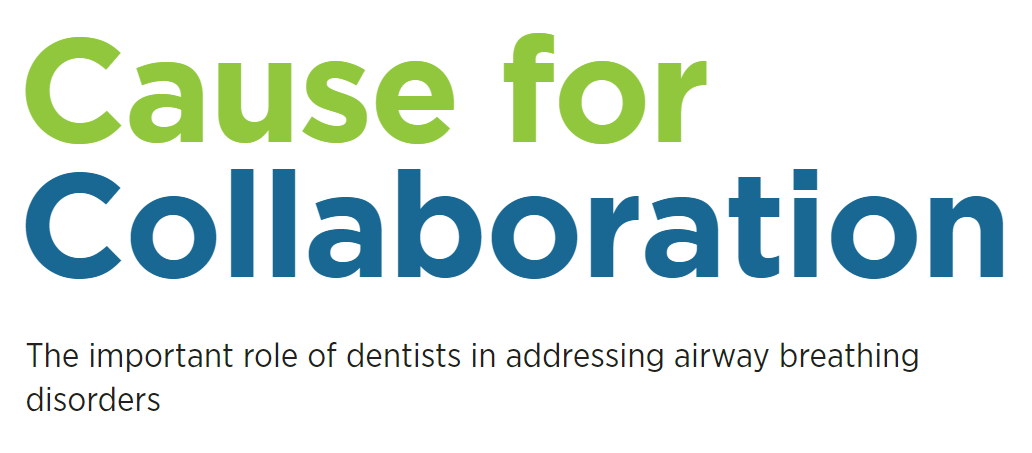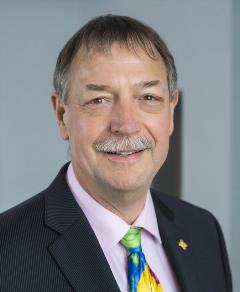Because many patients see their dentists more frequently (at least twice a year) than their primary care physicians — and spend more one-on-one time with them — dentists are in a unique position of being able to identify or address the impact of SBRDs and other chronic diseases on oral and overall health outcomes.

QUICK BITES
- Dentists play an essential role in assessing patients’ risk for sleep-related breathing disorders and referring patients accordingly.
- Sleep-related breathing disorders (SRBD) are disorders characterized by disruptions in normal breathing patterns, including snoring and obstructive sleep apnea (OSA).
- Dentists are not currently licensed to treat patients for SRBDs if those patients have not been diagnosed by a medical doctor.
- About 1 billion people worldwide — 55 million in the US — are at risk for some form of SRBD.
- Most sleep disorders are preventable or treatable, yet less than one-third of sufferers seek professional help.
- If left untreated, sleep apnea can lead to a host of severe health problems, including coronary artery disease, heart attack, and stroke.
- The ADA encourages dentists to screen patients for SRBD as a part of a comprehensive medical and dental history, recognizing symptoms such as daytime sleepiness, choking or snoring, and evaluating patients for risk factors such as obesity, retrognathia or hypertension.
|
It’s no surprise that many people have found it tough to get a good night’s sleep in the last year.
The COVID-19 pandemic has changed people’s sleep patterns around the world, as quantified by the 2021 Phillips Global Sleep Survey. Almost half of the survey’s 13,000 respondents in 13 countries said the COVID-19 pandemic negatively impacted their stress.
This, in turn, took a toll on sleep, with 70 percent of respondents reporting one or more new sleep challenges since the beginning of the pandemic.
This “coronasomnia” is presenting itself in a number of different ways in dental offices, including bruxism and other sleep-related breathing disorders (SRBDs). This puts dentists in the unique position of being able to identify potential health problems in their patients beyond the oral cavity.
Because many patients see their dentists more frequently (at least twice a year) than their primary care physicians — and spend more one-on-one time with them — dentists are in a unique position of being able to identify or address the impact of SBRDs and other chronic diseases on oral and overall health outcomes.
In fact, just this July, the Journal of the American Dental Association (JADA) published a risk assessment tool to help dentists screen for psychological conditions, pain disorders, sleep disorders, and orofacial symptoms when assessing patients’ risk of developing temporomandibular disorder pain.
And in 2017, the ADA House of Delegates adopted a statement on the role of dentistry in the care of patients with sleep-related breathing disorders. “Dentists can and do play an essential role in the multidisciplinary care of patients with certain sleep-related breathing disorders and are well-positioned to identify patients at greater risk of SRBD.”
EXPANDED ROLE IN CARE — NOT IN SCOPE
Dr. Steve Carstensen, a Bellevue dentist who specializes in sleep-related breathing disorders, agrees that dentists can and should play a significant role in recognizing whether a patient is at risk for a medical problem.
 “We have more ability to change the direction of community health than any other part of the workforce,” said Carstensen, who is a diplomate with the American Board of Dental Sleep Medicine and a consultant to the American Dental Association for sleep-related breathing disorders.
“We have more ability to change the direction of community health than any other part of the workforce,” said Carstensen, who is a diplomate with the American Board of Dental Sleep Medicine and a consultant to the American Dental Association for sleep-related breathing disorders.
Carstensen is clearly an advocate for the profession but notes that while dentists are well-positioned to identify medical issues in their patients, they must take care not to exceed their scope of practice.
Every licensed dentist is legally supported in placing oral appliances for treating SRBDs, but the lack of training in most dental education programs requires dentists to acquire additional education to include oral appliance therapy (OAT) within their scope of practice, wrote Carstensen in an April 2020 journal article on dentists and SRBDs.
“Dentists are not licensed to treat patients for SRBDs if those patients have never been diagnosed by a medical doctor,” Carstensen wrote. Collaborating with medical colleagues, the “airway aware” dentist can be a crucial part of the treatment of the large number of at-risk adults, he noted.
“By definition, dentists don’t diagnose medical conditions. Our scope of practice does not allow us to diagnose sleep apnea. But the powerful role we play is that we recognize people at risk for these conditions and help them find their way into the diagnostic pathway,” he said.
“The diagnostic process remains the bottleneck in sleep apnea treatment. The number of people who can be guided into that is dependent on health care professionals who can recognize people at risk,” he said. “The fact that there are 193,000 dentists across the country who can look for those signs and symptoms is what can impact community health.”
Carstensen adds that there are discrepancies from state to state over who can send patients home with diagnostic equipment for SRBDs.
In Washington state, the answer to that question is in the hands of the Dental Quality Assurance Commission, or DQAC, which regulates the practice of dentistry.
As Carstensen notes, dentists use tools all the time to identify medical problems — blood pressure cuffs, x-rays. It’s what dentists then do with that information that matters.
“If I take a simple x-ray and I see something that doesn’t look right, my responsibility is to find an expert to determine what that is. Many dentists and pediatric dentists use medical devices and if something unusual shows up, we’re doctors. We have a responsibility to point that out. In my view, home sleep apnea test is the same thing. The danger is what happens if the numbers come back indicating sleep apnea — we can show test results out of the healthy range, but not provide a diagnosis. So, you have to define very carefully how the information is used.”
Treating sleep-related breathing disorders is the most common non-surgical way dentists get into treating medical problems, said Carstensen.
“Since there isn’t a single entity in medicine that can treat sleep apnea, it requires collaboration — surgeons, doctors, allergists — many parts of medicine are required,” he added.
“Dentistry should be a part of that collaboration.”
BILLING AND INSURANCE
Recognizing possible signs of a SRBD is one thing. Billing for the service and working with insurance is another. Often, the billing and insurance concerns are where dentists may need to seek additional assistance when working with patients on these kinds of medical concerns.
For instance, none of Dr. Carstensen’s SRBD treatments are covered by dental insurance because sleep apnea is considered a medical problem.
“Dentists need to submit through medical to get coverage,” explained Carstensen. “It’s not a complete barrier anymore. We have the same choices we always do with health care — people can choose to pay, and we can choose to work with insurance.”
PEDIATRIC BREATHING ISSUES
The next frontier for airway-aware dentists: pediatric breathing issues. Carstensen said it’s much easier to address breathing issues when patients are younger than with an adult.
“Today, I may see a 55-year-old patient with high blood pressure who has chronic sleep problems. But that same patient was once a five-year-old, and their jaw structure may have been limiting their ability to breathe,” he explained. “It’s easier to address that in a five-year-old than in a 55-year-old. No health care provider is more capable of doing that than a dentist. We can impact habits, growth patterns and breathing issues from infancy,” he said.
Carstensen leads the ADA’s Children’s Airway Initiative and formed a task force that has developed a new screening tool for use in dental offices, pediatric offices and school health rooms worldwide. The tool is in validation phase now and the task force hopes to have it ready for adoption by the ADA House of Delegates in 2022. He is also collaborating with the ADA on a brochure about children’s airways, which details the importance of sleep, signs that parents should look for, and how dentists can help identify disordered breathing problems.
“If we started earlier in life, what could we change?” said Carstensen.
“The act of breathing is so fundamental to our whole physiology.”
TIPS FOR DENTISTS ADDRESSING PATIENTS’ MEDICAL CONCERNS
1. Be a good doctor. If you see a patient who is at risk for a medical problem, work within your license and within your limitations, but advocate for your patient’s health.
2. Consult with a medical colleague to obtain a diagnosis. Don’t take on more than you know or are licensed to diagnose. Stay within your scope.
3. Don’t ignore a likely diagnosis. If someone says they snore a lot, should you make them a snoring appliance? No — not without ruling out sleep apnea.
— Dr. Steve Carstensen, Premier Sleep
|
This article was originally published in the Summer 2021 Issue of WSDA News.